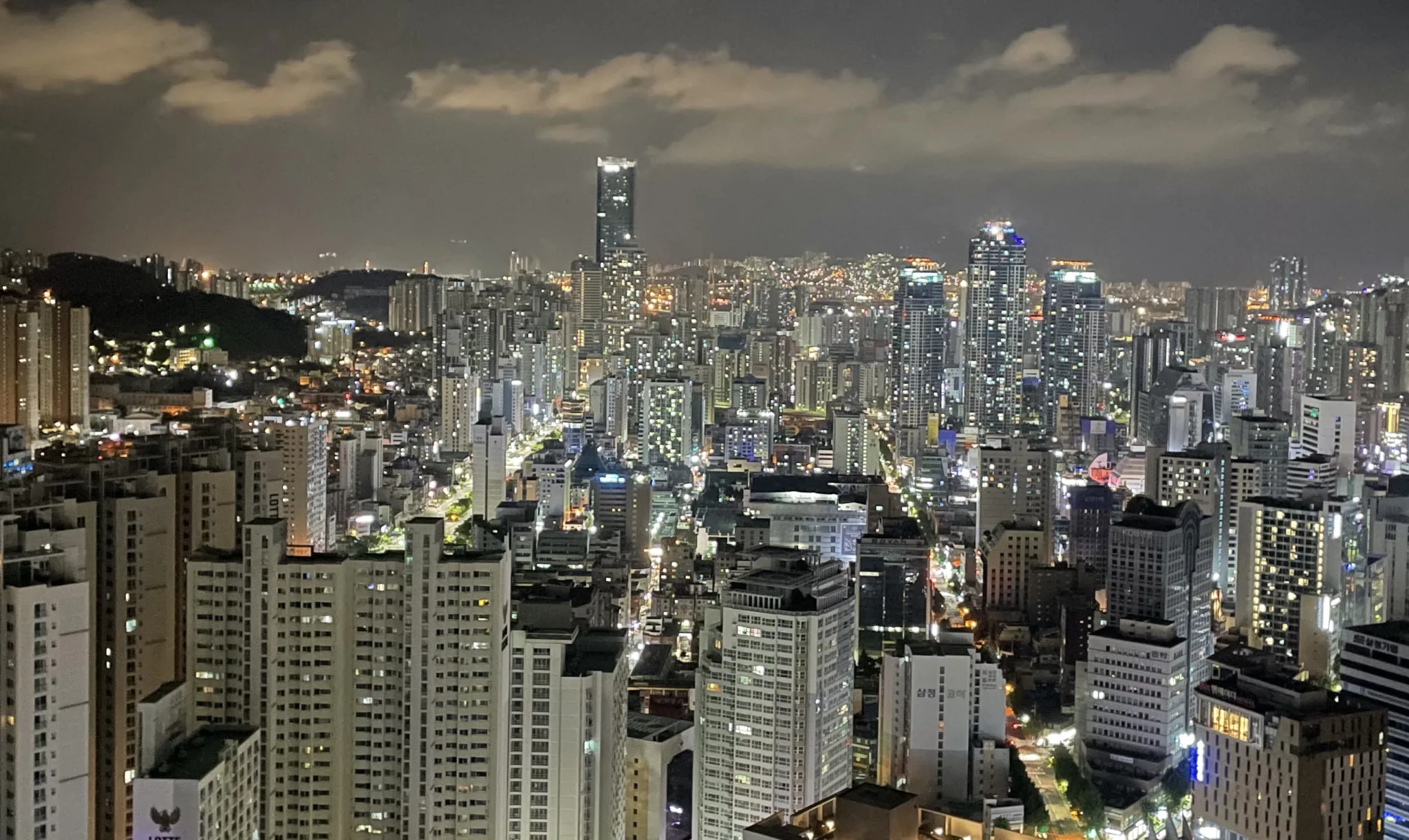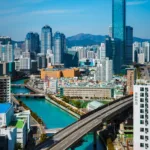In recent years, the city of Busan has witnessed a significant shift in its urban landscape. Prominent department stores and shopping malls, once the epicenter of retail activity, are increasingly being transformed into mixed-use developments. This trend reflects a broader move toward integrating residential, commercial, and recreational spaces within single complexes, reshaping the way urban environments are designed and utilized.
Parallel trends can be observed globally, particularly in cities in the United States and other countries, where similar transformations are underway. These changes are driven by a variety of factors, including evolving consumer behaviors, urban planning strategies aimed at creating more sustainable and livable cities, and economic shifts that favor the diversification of investment and development projects. Mixed-use developments, characterized by their blend of different functional spaces, are emerging as a key solution to the challenges of modern urbanization, offering a more dynamic and interconnected way of living.
As Busan continues to adopt this global trend, it is important to explore both the local and international contexts of these developments, understanding their impact on the economy, community dynamics, and urban lifestyles.
Economic Impact of Mixed-Use Developments in Busan
In Busan, the economic landscape is undergoing a transformative phase with the shift toward mixed-use developments. This is exemplified by the recent developments involving Daewoo Engineering & Construction Co., Ltd. The company notified E-Land Retail, the operator of NC Department Store in Seomyeon, of the contract termination, leading to the store’s closure by May next year. This NC Department Store, spanning six above-ground floors and four basement levels with a total area of 82,645 square meters, has been a vital part of the Seomyeon commercial district, housing over 200 fashion and food brands.
Daewoo Engineering & Construction has applied to build a substantial mixed-use complex in place of the NC Department Store Seomyeon branch. The proposed development includes a structure of 46 floors above ground and 8 floors below ground, divided into four sections. This move signifies a significant shift toward creating spaces that blend residential and commercial purposes, aligning with global urban development trends.
Similarly, the NC Department Store Haeundae branch in Haeundae New Town, completed in December 2005, has also come into the real estate market spotlight, raising speculations about potential development. Large shopping malls like Homeplus in Haeundae, Gaya, and Yeonsan have been successively sold, with plans to develop mixed-use buildings on these sold sites. Daewoo Engineering & Construction has also acquired the Mega Mart Namcheon branch, with plans to develop residential facilities there.
These developments reflect a strategic shift by Daewoo Engineering & Construction toward diversifying income streams and securing long-term ROI (Return On Investment), particularly in the current uncertain economic and real estate climate in Korea. By transitioning from traditional retail spaces to integrated mixed-use developments, the company is adapting to changing market demands, positioning itself as a forward-thinking developer in Busan’s urban landscape. This approach is expected to foster economic resilience, contribute to urban renewal, and offer a sustainable solution to the evolving needs of modern cities.
Community and Urban Lifestyle Impacts in Busan
The transition toward mixed-use developments in Busan marks a significant shift in urban living, aiming to enhance community bonds and sustainability. However, this transformation is not without its complexities. Financial and regulatory challenges are at the forefront, where the high cost and intricate legal frameworks governing such large-scale projects require adept handling. The delicate task of balancing the varied needs of residents, businesses, and visitors within these developments calls for thoughtful urban design and proactive management strategies.
Moreover, as Busan embraces this new urban model, the risk of gentrification looms. The potential increase in property values, while beneficial for some, could inadvertently displace long-standing communities, altering the city’s social fabric. This aspect necessitates a careful approach that includes measures to protect vulnerable populations.
Another aspect is the increased pressure on existing infrastructure. The surge in population density due to these developments can lead to congested roads and overburdened public utilities. Forward-thinking urban planning, focusing on sustainable and efficient infrastructure development, is crucial to address these concerns.
Furthermore, the mixed-use developments face inherent market risks. Economic downturns could unevenly impact the commercial, residential, and retail components of these projects, making financial resilience a key consideration.
In addressing these challenges, Busan has the opportunity to set a precedent for innovative urban development. Solutions such as incorporating affordable housing, enhancing public transport connectivity, and fostering community engagement are vital. This approach not only ensures economic viability but also promotes social inclusivity and environmental sustainability, paving the way for a harmonious and dynamic urban future.
Comparative International Perspective
Around the world, cities are embracing mixed-use developments, and Busan is joining this global trend. These developments, blending residential, commercial, and recreational spaces, offer profound benefits, as seen in various international examples.
In the United States, cities like Denver and Seattle have witnessed how mixed-use environments enhance urban walkability and reduce the need for expansive parking infrastructure. Such developments have revitalized neighborhoods, offering a blend of residential and commercial spaces that foster economic vitality and community engagement. The presence of diverse amenities within walking distance has not only spurred economic growth but also promoted sustainable living practices.
Mixed-use developments are also reshaping the real estate investment landscape. By providing multiple income streams, they offer reduced risks and attract a wide variety of tenants. This has been a boon for investors seeking stable and diversified portfolios, especially in urban centers.
However, these developments come with their own set of challenges. Navigating local regulations, addressing neighborhood concerns, and ensuring sufficient market interest are crucial aspects that need careful consideration. Moreover, the preference for urban living varies among individuals, underscoring the need for diverse and inclusive planning.
Navigating local regulations can be a formidable barrier. Each region has its unique zoning laws and building codes, which can be particularly complex for mixed-use projects due to their multifaceted nature. Adhering to these regulations while striving for innovative design can be a balancing act for developers.
Addressing neighborhood opposition is another significant challenge. Residents often have concerns about increased traffic, noise, and changes in the neighborhood’s character. Developers need to engage with communities proactively to address these concerns and build consensus.
Market viability is critical. The success of mixed-use developments heavily depends on market demand for both residential and commercial spaces. Economic downturns or shifts in consumer behavior can impact these developments disproportionately.
Lastly, balancing diverse stakeholder needs and managing potential gentification involves ensuring that the benefits of development are equitably distributed. Developers must consider affordable housing and support for local businesses to prevent displacement of existing communities.
These challenges highlight the need for comprehensive planning and community engagement in the development of mixed-use projects, ensuring they are not only economically viable but also socially inclusive and beneficial to the existing urban fabric.
Future Outlook and Strategies for Mixed-Use Developments in Busan
The trajectory of mixed-use developments in Busan points toward a transformative impact on the city’s urban landscape. The key to success lies in strategic planning and implementation. Busan is poised to embrace sustainable design principles, ensuring that these new developments are both environmentally friendly and energy-efficient. A focus on community inclusivity, particularly in providing diverse housing options, will be crucial to prevent displacement of existing residents.
Enhancing connectivity through pedestrian-friendly designs and integrated public transportation will address potential traffic and parking challenges. Ongoing engagement with various stakeholders, including local communities, businesses, and public authorities, is essential to ensure that the developments meet the needs of all and foster a sense of community ownership. These steps will not only stimulate economic growth but also significantly enhance the quality of life in Busan.
The transformation of Busan into a city of mixed-use developments signals a major shift in urban planning and lifestyle. This trend, aligning with global practices, promises economic resilience and community revitalization.
However, it brings with it challenges like navigating complex regulations, balancing diverse interests, and addressing infrastructural demands. The success of these projects hinges on strategic planning, stakeholder engagement, and a commitment to sustainability and inclusivity.
As Busan adapts to these developments, it stands on the cusp of creating a more dynamic, connected, and sustainable urban environment, setting a benchmark for future urban development in South Korea and beyond.



